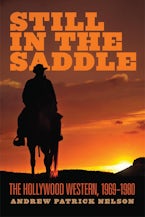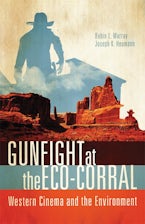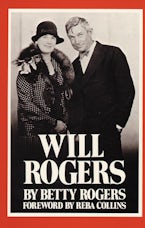SOCIAL SCIENCE / Media Studies
Showing results 1-5 of 5
Filter Results OPEN +

Shooting Arrows and Slinging Mud
Custer, the Press, and the Little Bighorn
The defeat of George Armstrong Custer and the Seventh Cavalry at the Battle of the Little Bighorn was big news in 1876. Newspaper coverage of the battle initiated hot debates about whether the U.S. government should change its policy toward American Indians and who was to blame for the army’s loss—the latter, an argument that ignites passion to this day.
Still in the Saddle
The Hollywood Western, 1969–1980
In Still in the Saddle, Nelson offers readers a new history of the Hollywood Western in the 1970s, a time when filmmakers tried to revive the genre by appealing to a diverse audience that included a new generation of socially conscious viewers.
Gunfight at the Eco-Corral
Western Cinema and the Environment
Most film critics point to classic conflicts—good versus evil, right versus wrong, civilization versus savagery—as defining themes of the American Western. In this provocative examination of Westerns, Robin L. Murray and Joseph K. Heumann argue for a more expansive view that moves beyond traditional conflicts to encompass environmental themes and struggles. Beginning with an analysis of two iconic Westerns, Shane and The Searchers, Murray and Heumann identify the environmental dichotomies—previously overlooked by critics—that are broached in both films, and they clarify the history that lies behind the environmental debates in these films and many others. The conflicts these movies address grow out of differing views of progress, frequently in relation to technology. The authors show that such binary oppositions tend to blur when examined closely, demonstrating that environmental issues are often more complex than we realize.
American Indians and the Mass Media
American Indians and the Mass Media explores Native experience and the mainstream media’s impact on American Indian histories, cultures, and communities. Chronicling milestones in the relationship between Indians and the media, some of the chapters employ a historical perspective, and others focus on contemporary practices and new technologies. Particularly valuable are the essays highlighting authentic tribal voices in current and future media. Mark Trahant chronicles the formation of the Native American Journalists Association, perhaps the most important early Indian advocacy organization, which he helped found. Including discussion questions for each essay and an extensive bibliography, American Indians and the Mass Media is a unique educational resource.
Will Rogers
Of the many books written about Will Rogers, none can have the immediacy, firsthand knowledge, and personal perspective of this account by his wife, Betty Blake Rogers. Her story is of Will...

Shooting Arrows and Slinging Mud
Custer, the Press, and the Little Bighorn
The defeat of George Armstrong Custer and the Seventh Cavalry at the Battle of the Little Bighorn was big news in 1876. Newspaper coverage of the battle initiated hot debates about whether the U.S. government should change its policy toward American Indians and who was to blame for the army’s loss—the latter, an argument that ignites passion to this day.
Still in the Saddle
The Hollywood Western, 1969–1980
In Still in the Saddle, Nelson offers readers a new history of the Hollywood Western in the 1970s, a time when filmmakers tried to revive the genre by appealing to a diverse audience that included a new generation of socially conscious viewers.
Gunfight at the Eco-Corral
Western Cinema and the Environment
Most film critics point to classic conflicts—good versus evil, right versus wrong, civilization versus savagery—as defining themes of the American Western. In this provocative examination of Westerns, Robin L. Murray and Joseph K. Heumann argue for a more expansive view that moves beyond traditional conflicts to encompass environmental themes and struggles. Beginning with an analysis of two iconic Westerns, Shane and The Searchers, Murray and Heumann identify the environmental dichotomies—previously overlooked by critics—that are broached in both films, and they clarify the history that lies behind the environmental debates in these films and many others. The conflicts these movies address grow out of differing views of progress, frequently in relation to technology. The authors show that such binary oppositions tend to blur when examined closely, demonstrating that environmental issues are often more complex than we realize.
American Indians and the Mass Media
American Indians and the Mass Media explores Native experience and the mainstream media’s impact on American Indian histories, cultures, and communities. Chronicling milestones in the relationship between Indians and the media, some of the chapters employ a historical perspective, and others focus on contemporary practices and new technologies. Particularly valuable are the essays highlighting authentic tribal voices in current and future media. Mark Trahant chronicles the formation of the Native American Journalists Association, perhaps the most important early Indian advocacy organization, which he helped found. Including discussion questions for each essay and an extensive bibliography, American Indians and the Mass Media is a unique educational resource.
Will Rogers
Of the many books written about Will Rogers, none can have the immediacy, firsthand knowledge, and personal perspective of this account by his wife, Betty Blake Rogers. Her story is of Will...






